EARLY TUDOR ENGLAND HENRY VII (1457-1509) Political transformations
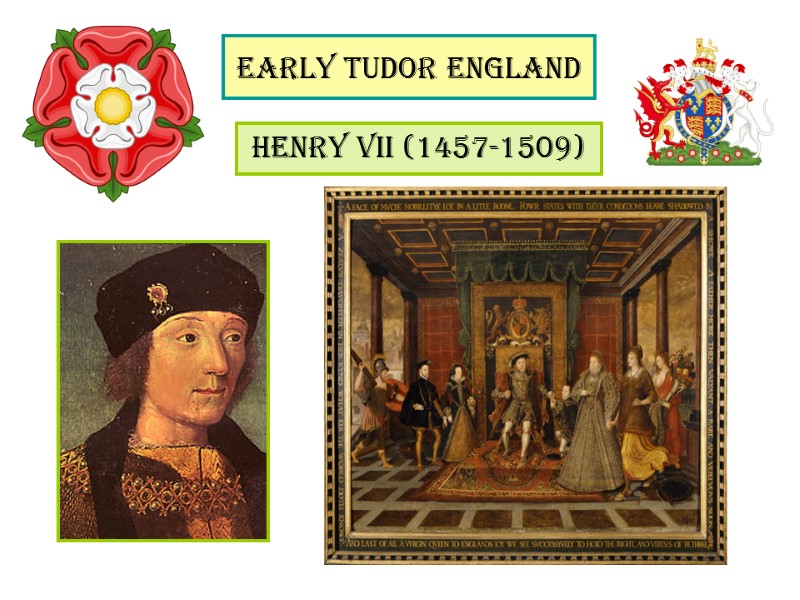
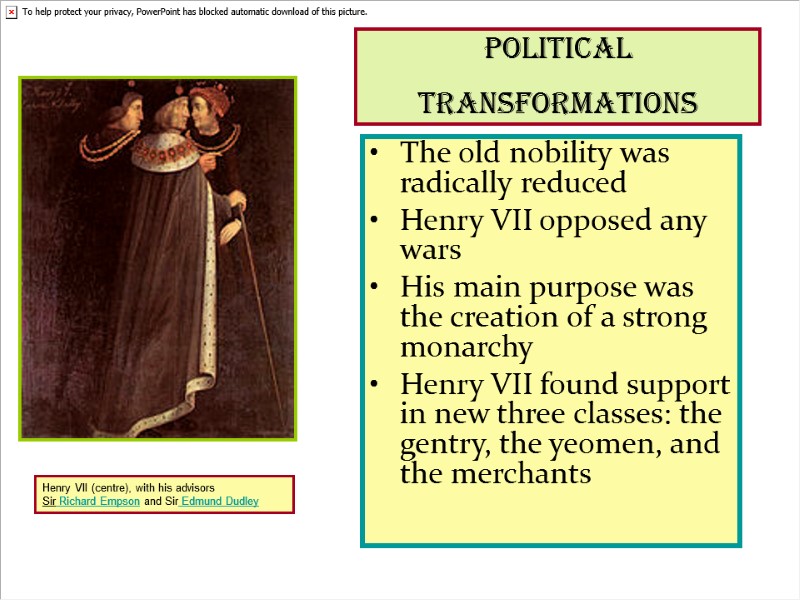
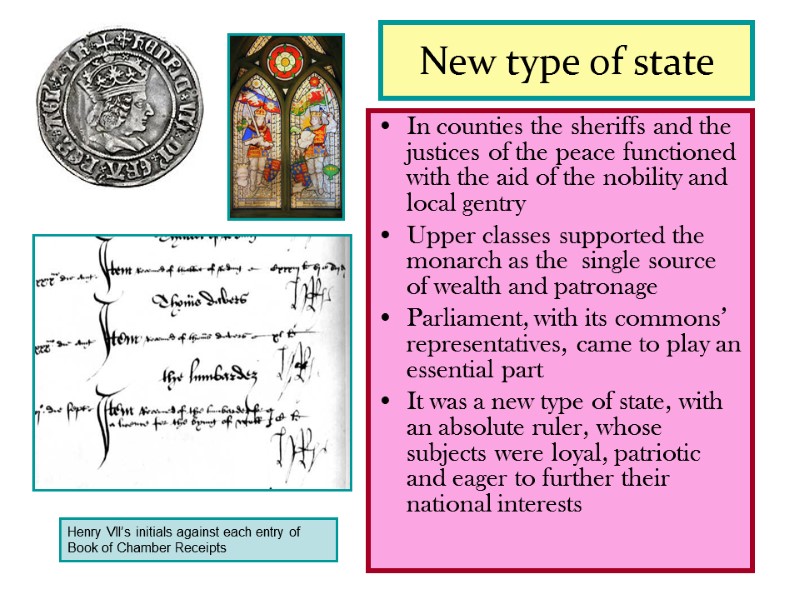
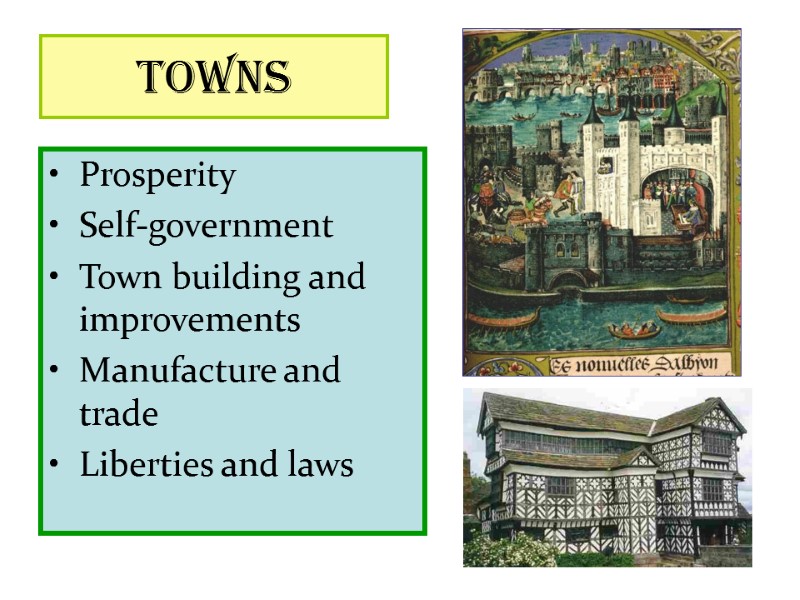
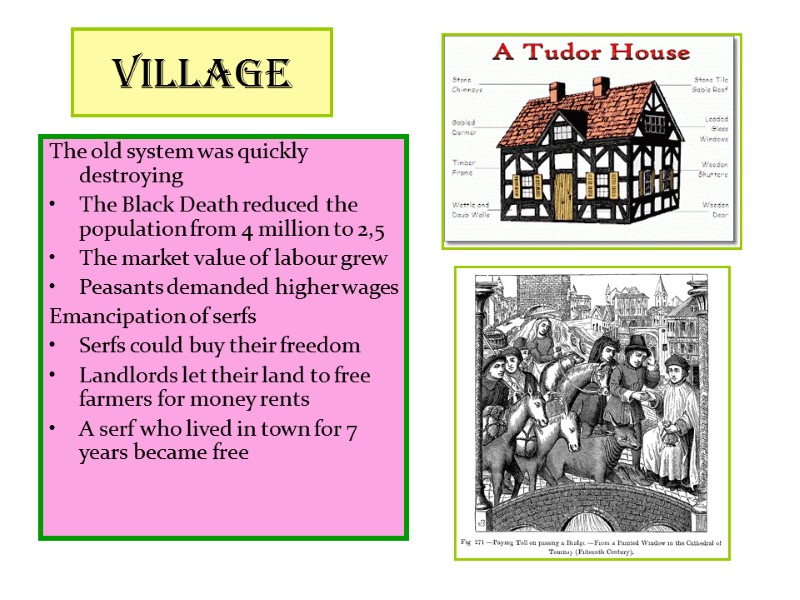
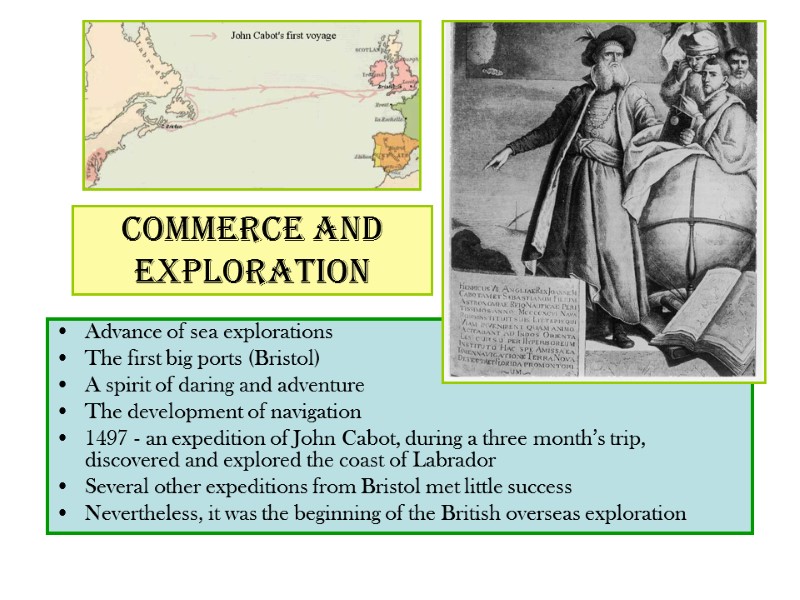
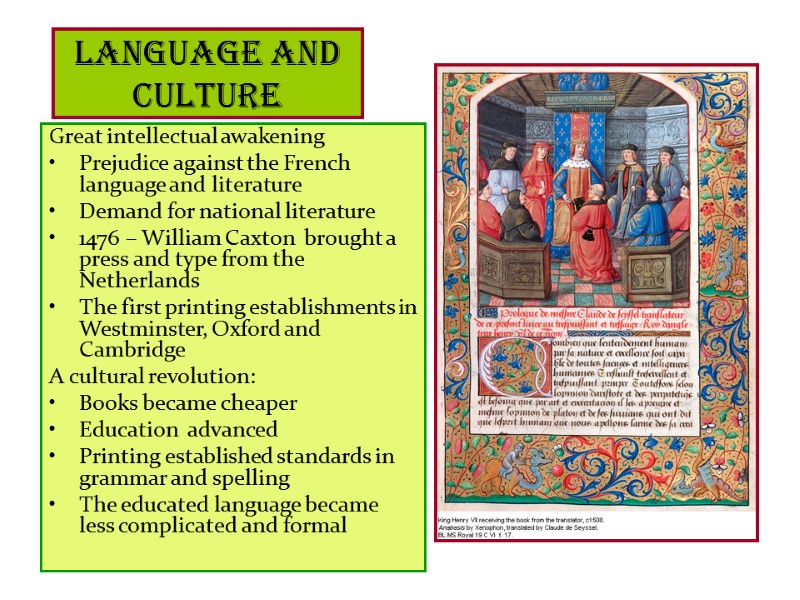
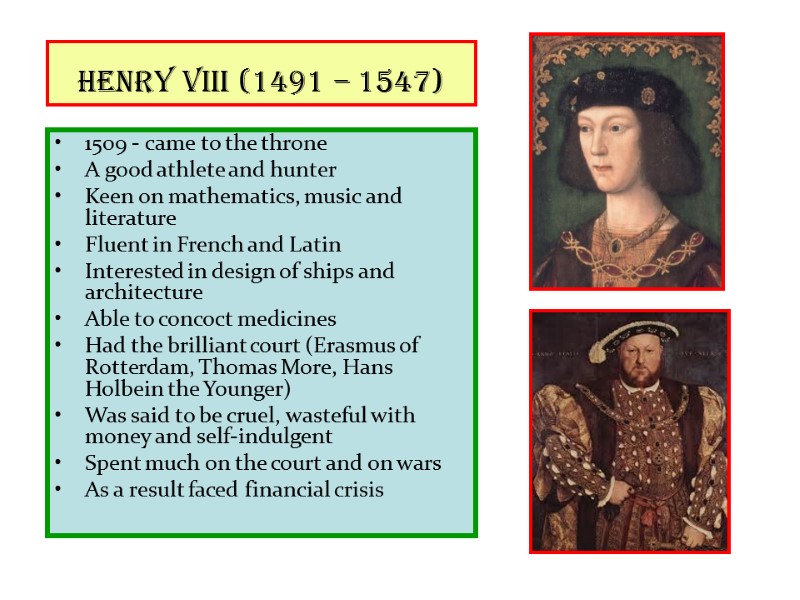
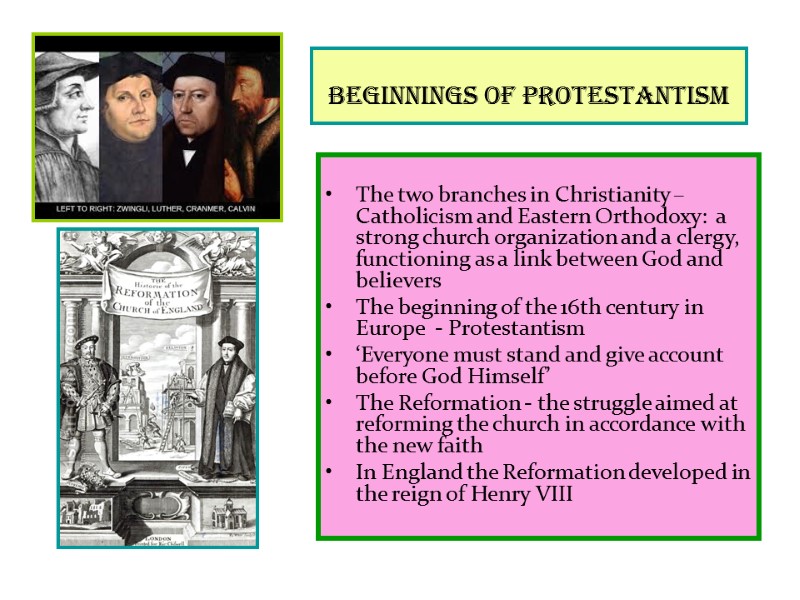
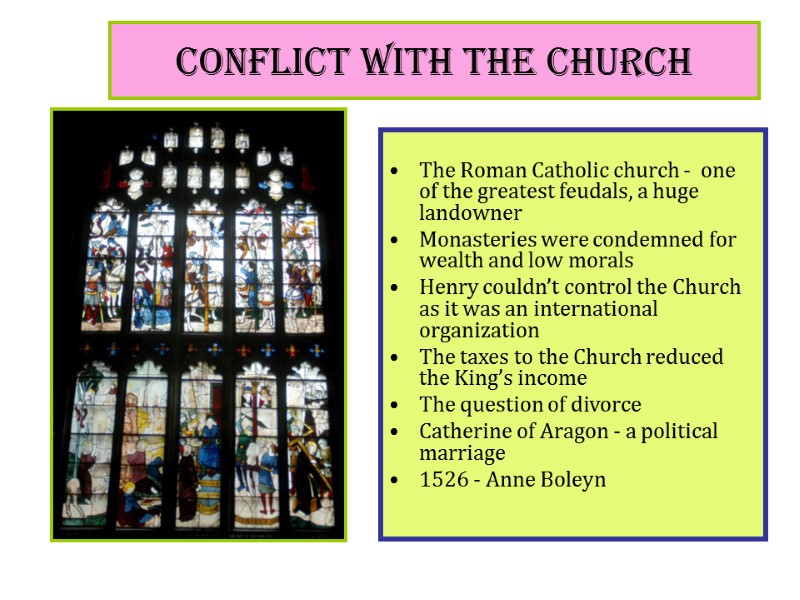
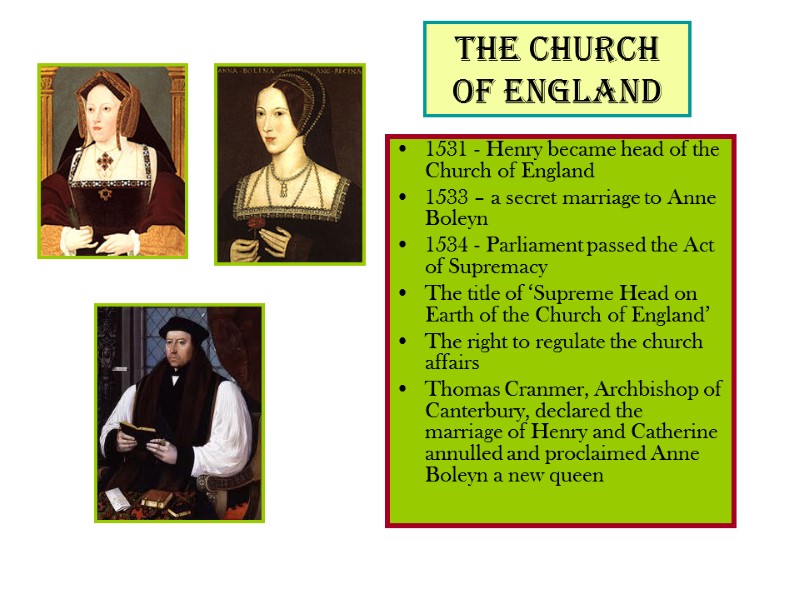
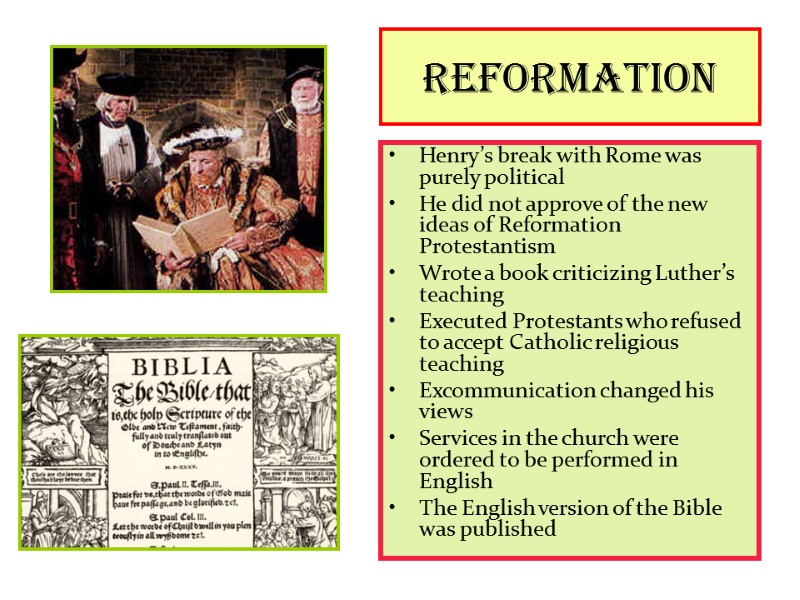
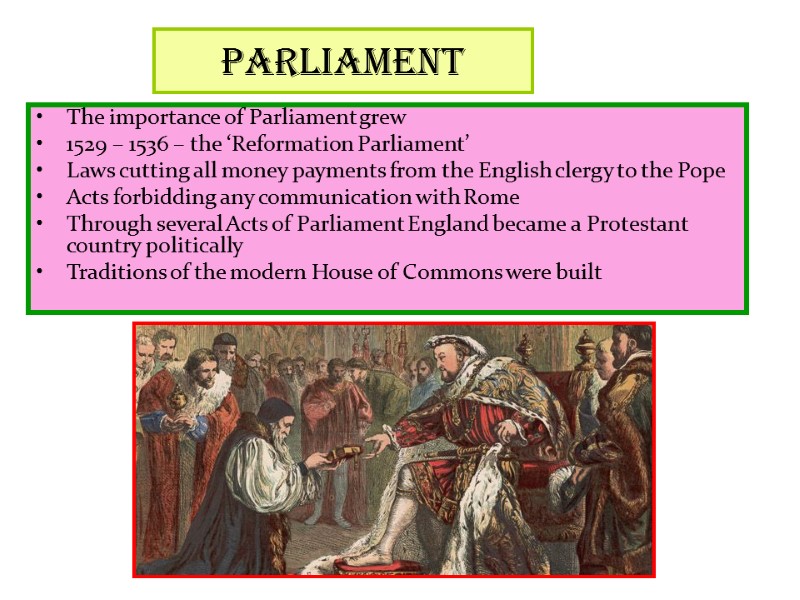
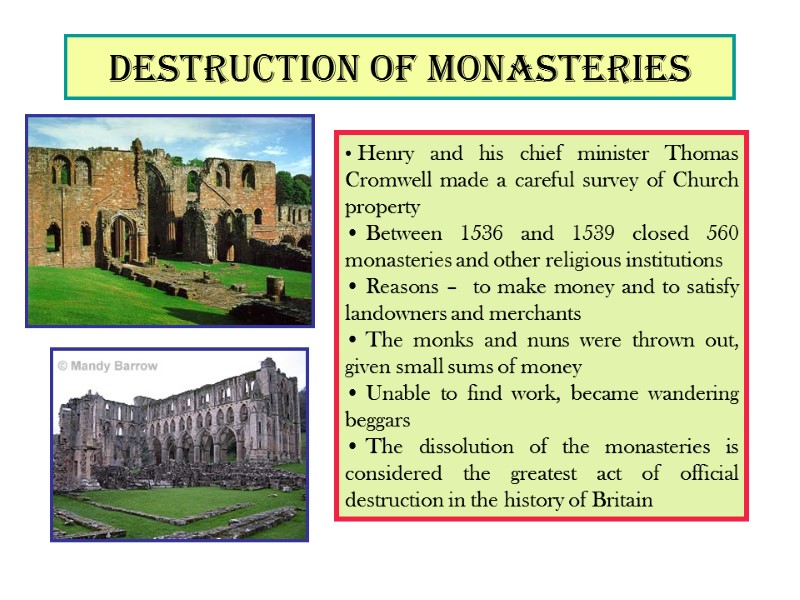
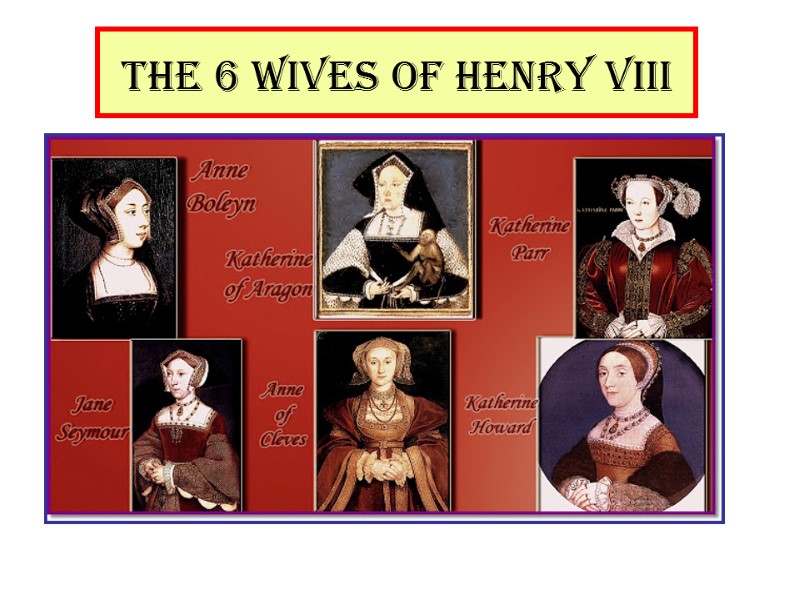
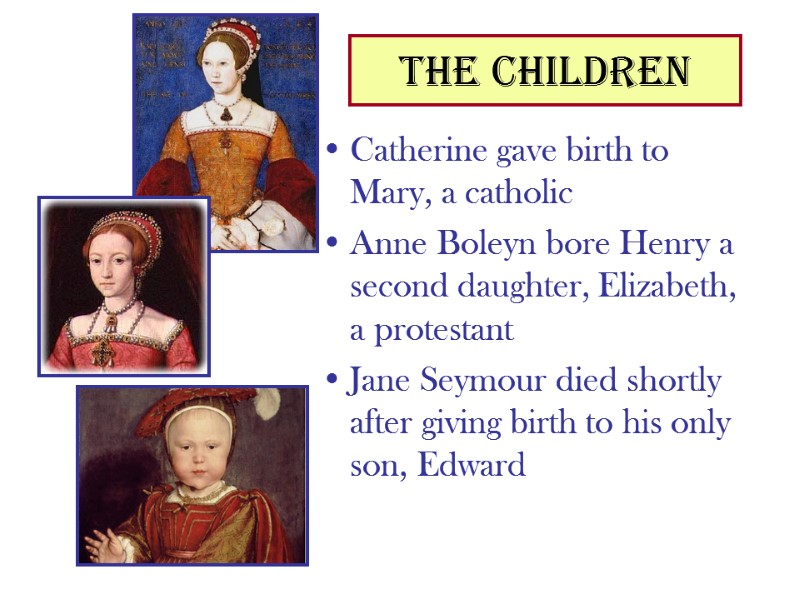
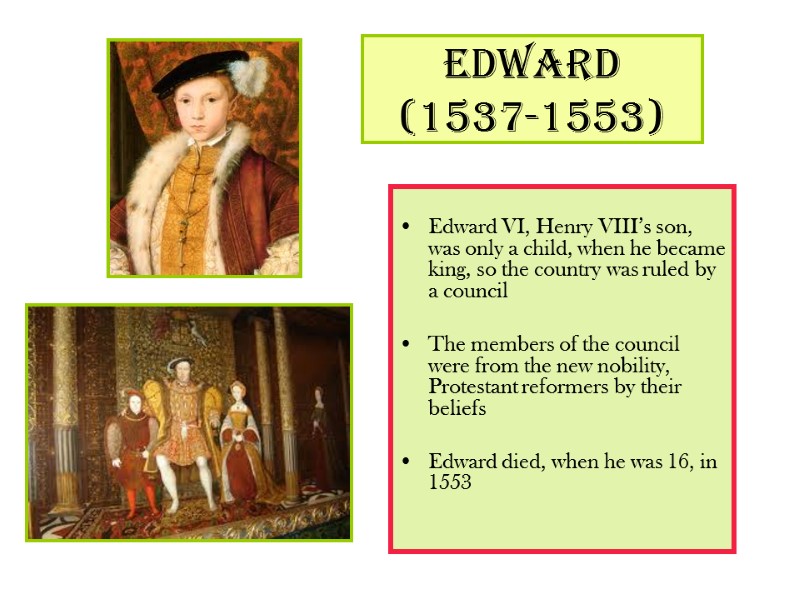
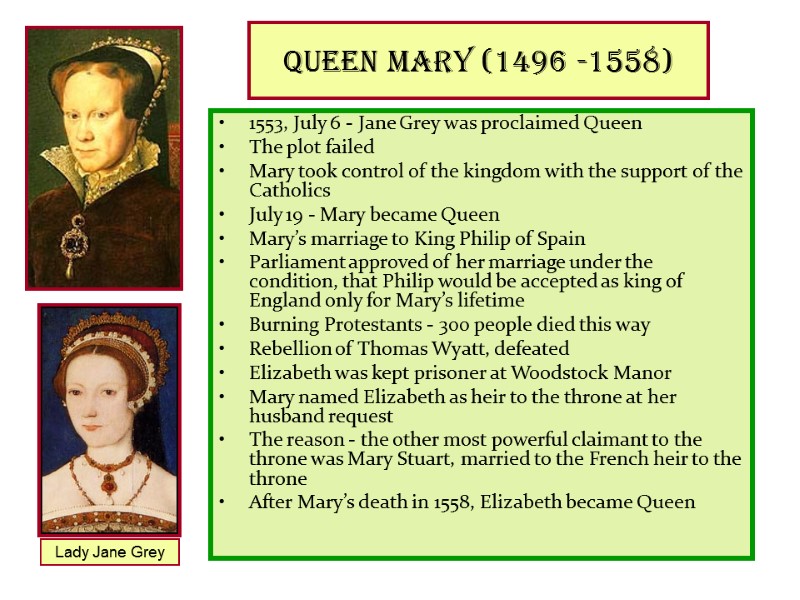
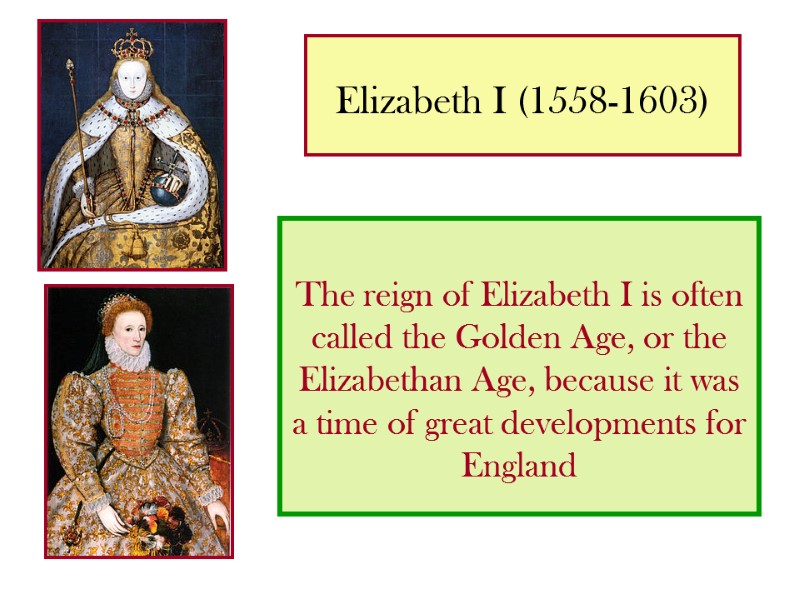
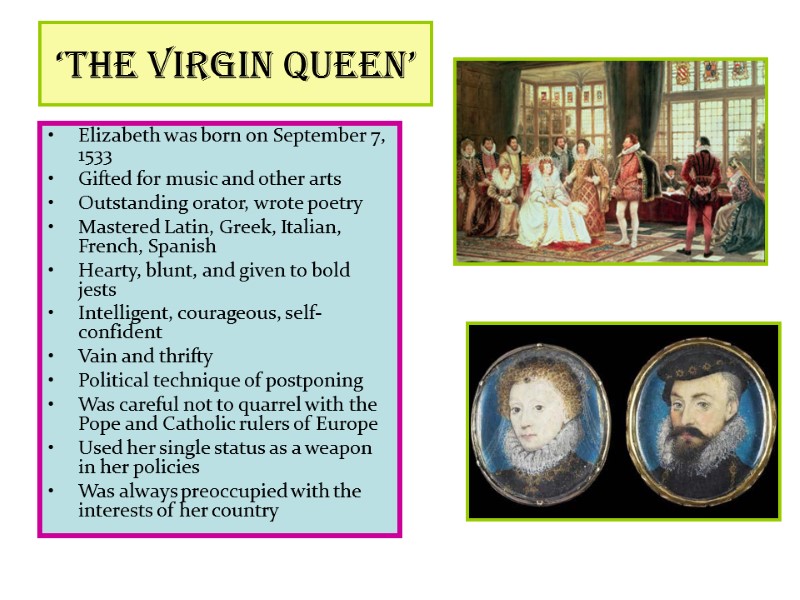
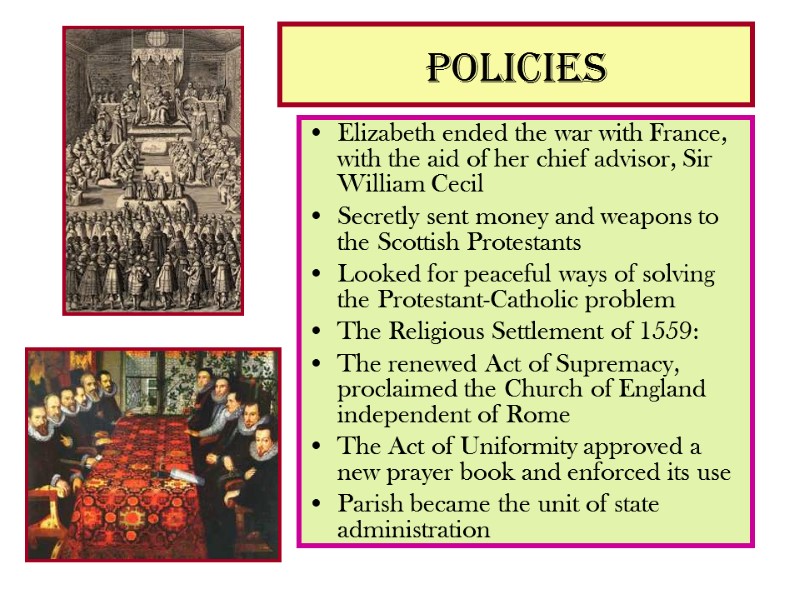
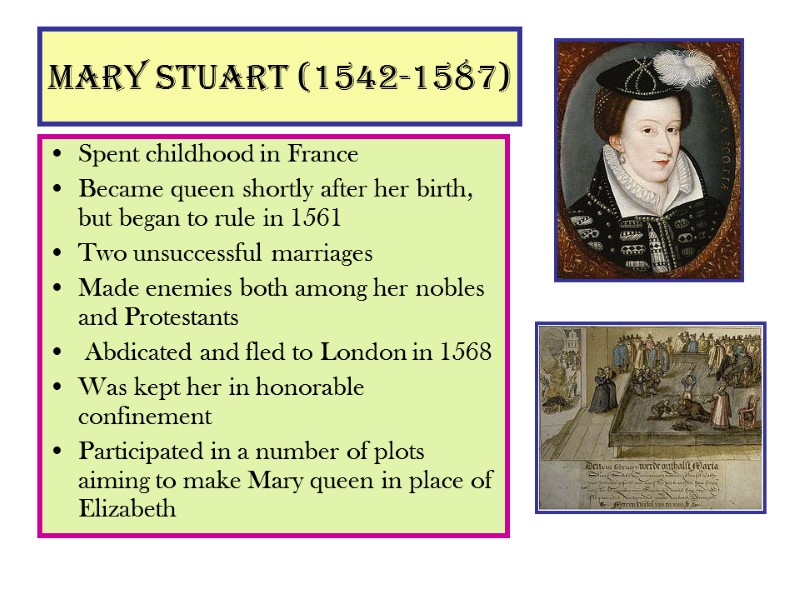
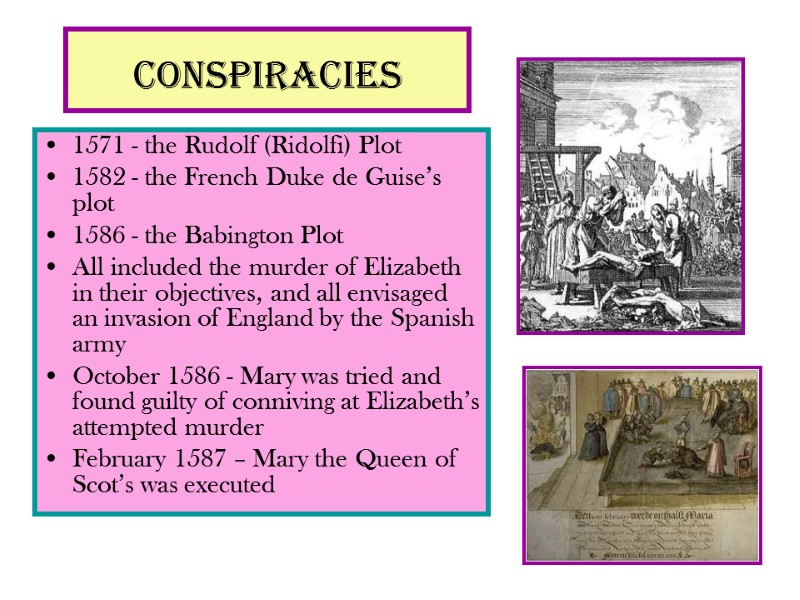
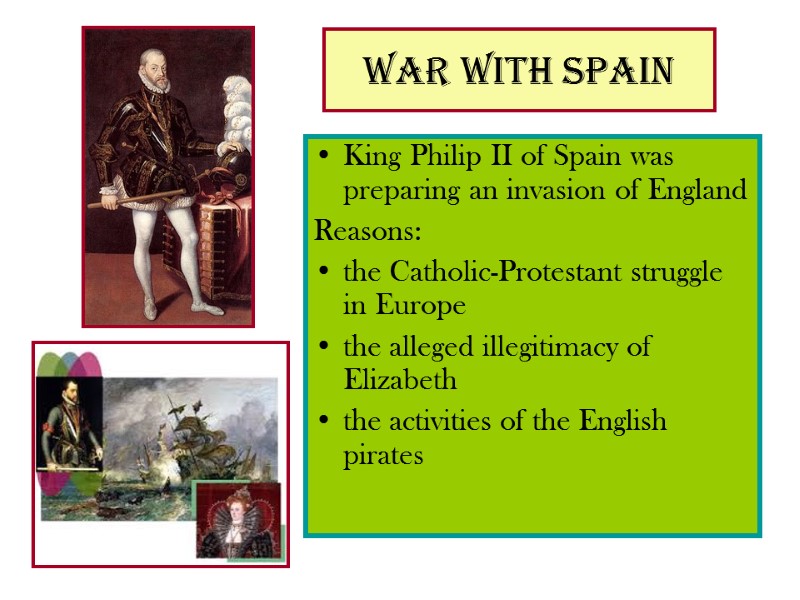
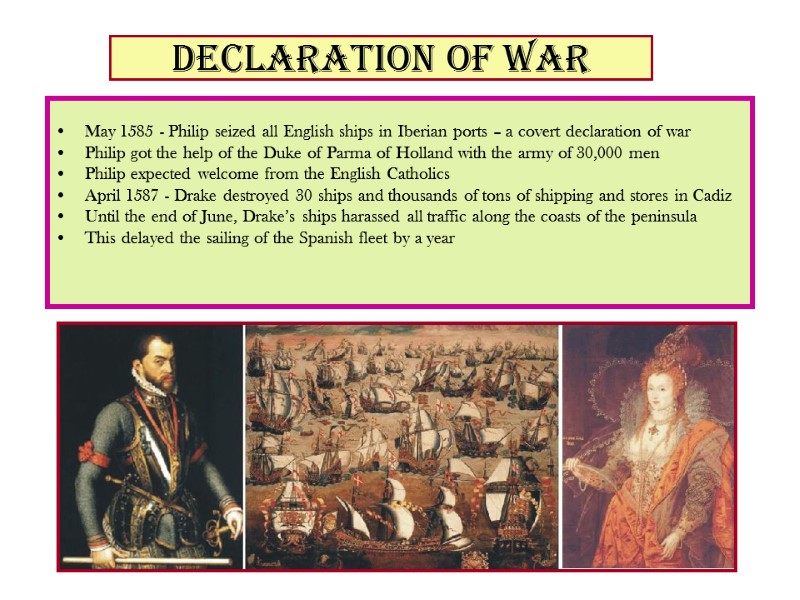
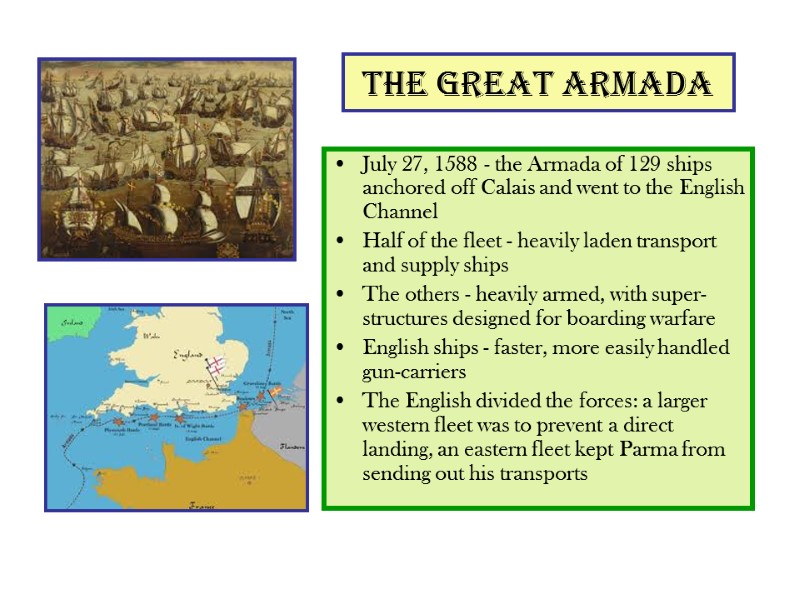
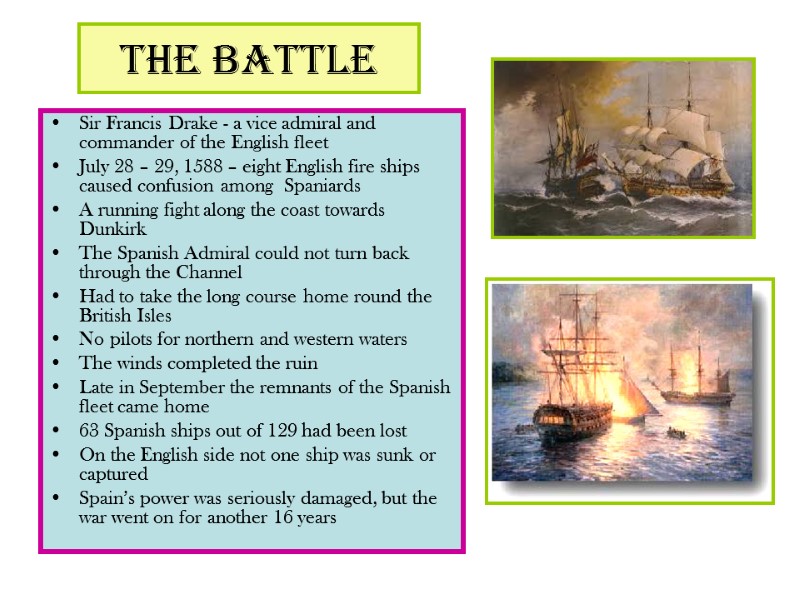
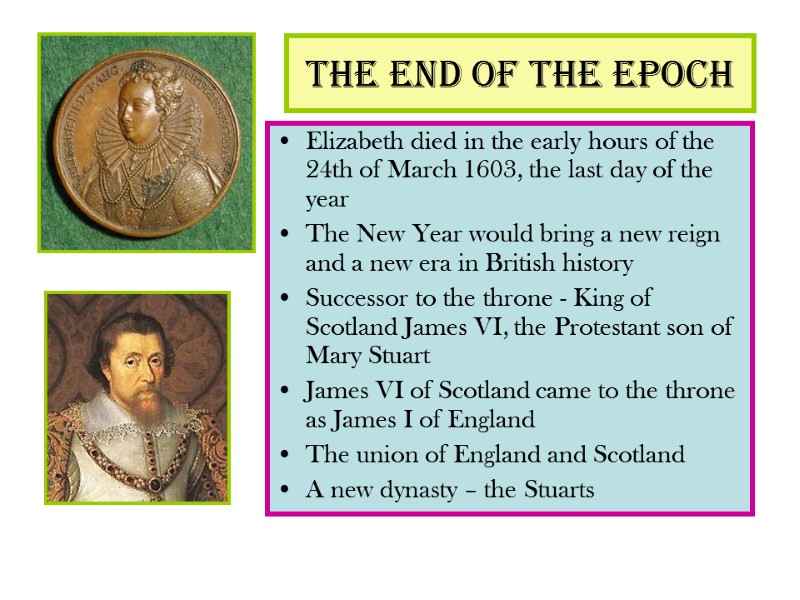
11382-powerpoint_absolute_monarchy._the_tudors.ppt
- Количество слайдов: 28
 EARLY TUDOR ENGLAND HENRY VII (1457-1509)
EARLY TUDOR ENGLAND HENRY VII (1457-1509)
 Political transformations The old nobility was radically reduced Henry VII opposed any wars His main purpose was the creation of a strong monarchy Henry VII found support in new three classes: the gentry, the yeomen, and the merchants Henry VII (centre), with his advisors Sir Richard Empson and Sir Edmund Dudley
Political transformations The old nobility was radically reduced Henry VII opposed any wars His main purpose was the creation of a strong monarchy Henry VII found support in new three classes: the gentry, the yeomen, and the merchants Henry VII (centre), with his advisors Sir Richard Empson and Sir Edmund Dudley
 New type of state In counties the sheriffs and the justices of the peace functioned with the aid of the nobility and local gentry Upper classes supported the monarch as the single source of wealth and patronage Parliament, with its commons’ representatives, came to play an essential part It was a new type of state, with an absolute ruler, whose subjects were loyal, patriotic and eager to further their national interests Henry VII’s initials against each entry of Book of Chamber Receipts
New type of state In counties the sheriffs and the justices of the peace functioned with the aid of the nobility and local gentry Upper classes supported the monarch as the single source of wealth and patronage Parliament, with its commons’ representatives, came to play an essential part It was a new type of state, with an absolute ruler, whose subjects were loyal, patriotic and eager to further their national interests Henry VII’s initials against each entry of Book of Chamber Receipts
 Towns Prosperity Self-government Town building and improvements Manufacture and trade Liberties and laws
Towns Prosperity Self-government Town building and improvements Manufacture and trade Liberties and laws
 Village The old system was quickly destroying The Black Death reduced the population from 4 million to 2,5 The market value of labour grew Peasants demanded higher wages Emancipation of serfs Serfs could buy their freedom Landlords let their land to free farmers for money rents A serf who lived in town for 7 years became free
Village The old system was quickly destroying The Black Death reduced the population from 4 million to 2,5 The market value of labour grew Peasants demanded higher wages Emancipation of serfs Serfs could buy their freedom Landlords let their land to free farmers for money rents A serf who lived in town for 7 years became free
 Commerce and exploration Advance of sea explorations The first big ports (Bristol) A spirit of daring and adventure The development of navigation 1497 - an expedition of John Cabot, during a three month’s trip, discovered and explored the coast of Labrador Several other expeditions from Bristol met little success Nevertheless, it was the beginning of the British overseas exploration
Commerce and exploration Advance of sea explorations The first big ports (Bristol) A spirit of daring and adventure The development of navigation 1497 - an expedition of John Cabot, during a three month’s trip, discovered and explored the coast of Labrador Several other expeditions from Bristol met little success Nevertheless, it was the beginning of the British overseas exploration
 Language and culture Great intellectual awakening Prejudice against the French language and literature Demand for national literature 1476 – William Caxton brought a press and type from the Netherlands The first printing establishments in Westminster, Oxford and Cambridge A cultural revolution: Books became cheaper Education advanced Printing established standards in grammar and spelling The educated language became less complicated and formal
Language and culture Great intellectual awakening Prejudice against the French language and literature Demand for national literature 1476 – William Caxton brought a press and type from the Netherlands The first printing establishments in Westminster, Oxford and Cambridge A cultural revolution: Books became cheaper Education advanced Printing established standards in grammar and spelling The educated language became less complicated and formal
 Henry VIII (1491 – 1547) 1509 - came to the throne A good athlete and hunter Keen on mathematics, music and literature Fluent in French and Latin Interested in design of ships and architecture Able to concoct medicines Had the brilliant court (Erasmus of Rotterdam, Thomas More, Hans Holbein the Younger) Was said to be cruel, wasteful with money and self-indulgent Spent much on the court and on wars As a result faced financial crisis
Henry VIII (1491 – 1547) 1509 - came to the throne A good athlete and hunter Keen on mathematics, music and literature Fluent in French and Latin Interested in design of ships and architecture Able to concoct medicines Had the brilliant court (Erasmus of Rotterdam, Thomas More, Hans Holbein the Younger) Was said to be cruel, wasteful with money and self-indulgent Spent much on the court and on wars As a result faced financial crisis
 Beginnings of Protestantism The two branches in Christianity – Catholicism and Eastern Orthodoxy: a strong church organization and a clergy, functioning as a link between God and believers The beginning of the 16th century in Europe - Protestantism ‘Everyone must stand and give account before God Himself’ The Reformation - the struggle aimed at reforming the church in accordance with the new faith In England the Reformation developed in the reign of Henry VIII
Beginnings of Protestantism The two branches in Christianity – Catholicism and Eastern Orthodoxy: a strong church organization and a clergy, functioning as a link between God and believers The beginning of the 16th century in Europe - Protestantism ‘Everyone must stand and give account before God Himself’ The Reformation - the struggle aimed at reforming the church in accordance with the new faith In England the Reformation developed in the reign of Henry VIII
 Conflict with the Church The Roman Catholic church - one of the greatest feudals, a huge landowner Monasteries were condemned for wealth and low morals Henry couldn’t control the Church as it was an international organization The taxes to the Church reduced the King’s income The question of divorce Catherine of Aragon - a political marriage 1526 - Anne Boleyn
Conflict with the Church The Roman Catholic church - one of the greatest feudals, a huge landowner Monasteries were condemned for wealth and low morals Henry couldn’t control the Church as it was an international organization The taxes to the Church reduced the King’s income The question of divorce Catherine of Aragon - a political marriage 1526 - Anne Boleyn
 The Church of England 1531 - Henry became head of the Church of England 1533 – a secret marriage to Anne Boleyn 1534 - Parliament passed the Act of Supremacy The title of ‘Supreme Head on Earth of the Church of England’ The right to regulate the church affairs Thomas Cranmer, Archbishop of Canterbury, declared the marriage of Henry and Catherine annulled and proclaimed Anne Boleyn a new queen
The Church of England 1531 - Henry became head of the Church of England 1533 – a secret marriage to Anne Boleyn 1534 - Parliament passed the Act of Supremacy The title of ‘Supreme Head on Earth of the Church of England’ The right to regulate the church affairs Thomas Cranmer, Archbishop of Canterbury, declared the marriage of Henry and Catherine annulled and proclaimed Anne Boleyn a new queen
 Reformation Henry’s break with Rome was purely political He did not approve of the new ideas of Reformation Protestantism Wrote a book criticizing Luther’s teaching Executed Protestants who refused to accept Catholic religious teaching Excommunication changed his views Services in the church were ordered to be performed in English The English version of the Bible was published
Reformation Henry’s break with Rome was purely political He did not approve of the new ideas of Reformation Protestantism Wrote a book criticizing Luther’s teaching Executed Protestants who refused to accept Catholic religious teaching Excommunication changed his views Services in the church were ordered to be performed in English The English version of the Bible was published
 Parliament The importance of Parliament grew 1529 – 1536 – the ‘Reformation Parliament’ Laws cutting all money payments from the English clergy to the Pope Acts forbidding any communication with Rome Through several Acts of Parliament England became a Protestant country politically Traditions of the modern House of Commons were built
Parliament The importance of Parliament grew 1529 – 1536 – the ‘Reformation Parliament’ Laws cutting all money payments from the English clergy to the Pope Acts forbidding any communication with Rome Through several Acts of Parliament England became a Protestant country politically Traditions of the modern House of Commons were built
 Destruction of monasteries Henry and his chief minister Thomas Cromwell made a careful survey of Church property Between 1536 and 1539 closed 560 monasteries and other religious institutions Reasons – to make money and to satisfy landowners and merchants The monks and nuns were thrown out, given small sums of money Unable to find work, became wandering beggars The dissolution of the monasteries is considered the greatest act of official destruction in the history of Britain
Destruction of monasteries Henry and his chief minister Thomas Cromwell made a careful survey of Church property Between 1536 and 1539 closed 560 monasteries and other religious institutions Reasons – to make money and to satisfy landowners and merchants The monks and nuns were thrown out, given small sums of money Unable to find work, became wandering beggars The dissolution of the monasteries is considered the greatest act of official destruction in the history of Britain
 The 6 wives of Henry VIII
The 6 wives of Henry VIII
 The children Catherine gave birth to Mary, a catholic Anne Boleyn bore Henry a second daughter, Elizabeth, a protestant Jane Seymour died shortly after giving birth to his only son, Edward
The children Catherine gave birth to Mary, a catholic Anne Boleyn bore Henry a second daughter, Elizabeth, a protestant Jane Seymour died shortly after giving birth to his only son, Edward
 Edward (1537-1553) Edward VI, Henry VIII’s son, was only a child, when he became king, so the country was ruled by a council The members of the council were from the new nobility, Protestant reformers by their beliefs Edward died, when he was 16, in 1553
Edward (1537-1553) Edward VI, Henry VIII’s son, was only a child, when he became king, so the country was ruled by a council The members of the council were from the new nobility, Protestant reformers by their beliefs Edward died, when he was 16, in 1553
 Queen Mary (1496 -1558) 1553, July 6 - Jane Grey was proclaimed Queen The plot failed Mary took control of the kingdom with the support of the Catholics July 19 - Mary became Queen Mary’s marriage to King Philip of Spain Parliament approved of her marriage under the condition, that Philip would be accepted as king of England only for Mary’s lifetime Burning Protestants - 300 people died this way Rebellion of Thomas Wyatt, defeated Elizabeth was kept prisoner at Woodstock Manor Mary named Elizabeth as heir to the throne at her husband request The reason - the other most powerful claimant to the throne was Mary Stuart, married to the French heir to the throne After Mary’s death in 1558, Elizabeth became Queen Lady Jane Grey
Queen Mary (1496 -1558) 1553, July 6 - Jane Grey was proclaimed Queen The plot failed Mary took control of the kingdom with the support of the Catholics July 19 - Mary became Queen Mary’s marriage to King Philip of Spain Parliament approved of her marriage under the condition, that Philip would be accepted as king of England only for Mary’s lifetime Burning Protestants - 300 people died this way Rebellion of Thomas Wyatt, defeated Elizabeth was kept prisoner at Woodstock Manor Mary named Elizabeth as heir to the throne at her husband request The reason - the other most powerful claimant to the throne was Mary Stuart, married to the French heir to the throne After Mary’s death in 1558, Elizabeth became Queen Lady Jane Grey
 Elizabeth I (1558-1603) The reign of Elizabeth I is often called the Golden Age, or the Elizabethan Age, because it was a time of great developments for England
Elizabeth I (1558-1603) The reign of Elizabeth I is often called the Golden Age, or the Elizabethan Age, because it was a time of great developments for England
 ‘The Virgin Queen’ Elizabeth was born on September 7, 1533 Gifted for music and other arts Outstanding orator, wrote poetry Mastered Latin, Greek, Italian, French, Spanish Hearty, blunt, and given to bold jests Intelligent, courageous, self-confident Vain and thrifty Political technique of postponing Was careful not to quarrel with the Pope and Catholic rulers of Europe Used her single status as a weapon in her policies Was always preoccupied with the interests of her country
‘The Virgin Queen’ Elizabeth was born on September 7, 1533 Gifted for music and other arts Outstanding orator, wrote poetry Mastered Latin, Greek, Italian, French, Spanish Hearty, blunt, and given to bold jests Intelligent, courageous, self-confident Vain and thrifty Political technique of postponing Was careful not to quarrel with the Pope and Catholic rulers of Europe Used her single status as a weapon in her policies Was always preoccupied with the interests of her country
 policies Elizabeth ended the war with France, with the aid of her chief advisor, Sir William Cecil Secretly sent money and weapons to the Scottish Protestants Looked for peaceful ways of solving the Protestant-Catholic problem The Religious Settlement of 1559: The renewed Act of Supremacy, proclaimed the Church of England independent of Rome The Act of Uniformity approved a new prayer book and enforced its use Parish became the unit of state administration
policies Elizabeth ended the war with France, with the aid of her chief advisor, Sir William Cecil Secretly sent money and weapons to the Scottish Protestants Looked for peaceful ways of solving the Protestant-Catholic problem The Religious Settlement of 1559: The renewed Act of Supremacy, proclaimed the Church of England independent of Rome The Act of Uniformity approved a new prayer book and enforced its use Parish became the unit of state administration
 Mary Stuart (1542-1587) Spent childhood in France Became queen shortly after her birth, but began to rule in 1561 Two unsuccessful marriages Made enemies both among her nobles and Protestants Abdicated and fled to London in 1568 Was kept her in honorable confinement Participated in a number of plots aiming to make Mary queen in place of Elizabeth
Mary Stuart (1542-1587) Spent childhood in France Became queen shortly after her birth, but began to rule in 1561 Two unsuccessful marriages Made enemies both among her nobles and Protestants Abdicated and fled to London in 1568 Was kept her in honorable confinement Participated in a number of plots aiming to make Mary queen in place of Elizabeth
 Conspiracies 1571 - the Rudolf (Ridolfi) Plot 1582 - the French Duke de Guise’s plot 1586 - the Babington Plot All included the murder of Elizabeth in their objectives, and all envisaged an invasion of England by the Spanish army October 1586 - Mary was tried and found guilty of conniving at Elizabeth’s attempted murder February 1587 – Mary the Queen of Scot’s was executed
Conspiracies 1571 - the Rudolf (Ridolfi) Plot 1582 - the French Duke de Guise’s plot 1586 - the Babington Plot All included the murder of Elizabeth in their objectives, and all envisaged an invasion of England by the Spanish army October 1586 - Mary was tried and found guilty of conniving at Elizabeth’s attempted murder February 1587 – Mary the Queen of Scot’s was executed
 War with Spain King Philip II of Spain was preparing an invasion of England Reasons: the Catholic-Protestant struggle in Europe the alleged illegitimacy of Elizabeth the activities of the English pirates
War with Spain King Philip II of Spain was preparing an invasion of England Reasons: the Catholic-Protestant struggle in Europe the alleged illegitimacy of Elizabeth the activities of the English pirates
 Declaration of war May 1585 - Philip seized all English ships in Iberian ports – a covert declaration of war Philip got the help of the Duke of Parma of Holland with the army of 30,000 men Philip expected welcome from the English Catholics April 1587 - Drake destroyed 30 ships and thousands of tons of shipping and stores in Cadiz Until the end of June, Drake’s ships harassed all traffic along the coasts of the peninsula This delayed the sailing of the Spanish fleet by a year
Declaration of war May 1585 - Philip seized all English ships in Iberian ports – a covert declaration of war Philip got the help of the Duke of Parma of Holland with the army of 30,000 men Philip expected welcome from the English Catholics April 1587 - Drake destroyed 30 ships and thousands of tons of shipping and stores in Cadiz Until the end of June, Drake’s ships harassed all traffic along the coasts of the peninsula This delayed the sailing of the Spanish fleet by a year
 The Great Armada July 27, 1588 - the Armada of 129 ships anchored off Calais and went to the English Channel Half of the fleet - heavily laden transport and supply ships The others - heavily armed, with super-structures designed for boarding warfare English ships - faster, more easily handled gun-carriers The English divided the forces: a larger western fleet was to prevent a direct landing, an eastern fleet kept Parma from sending out his transports
The Great Armada July 27, 1588 - the Armada of 129 ships anchored off Calais and went to the English Channel Half of the fleet - heavily laden transport and supply ships The others - heavily armed, with super-structures designed for boarding warfare English ships - faster, more easily handled gun-carriers The English divided the forces: a larger western fleet was to prevent a direct landing, an eastern fleet kept Parma from sending out his transports
 The battle Sir Francis Drake - a vice admiral and commander of the English fleet July 28 – 29, 1588 – eight English fire ships caused confusion among Spaniards A running fight along the coast towards Dunkirk The Spanish Admiral could not turn back through the Channel Had to take the long course home round the British Isles No pilots for northern and western waters The winds completed the ruin Late in September the remnants of the Spanish fleet came home 63 Spanish ships out of 129 had been lost On the English side not one ship was sunk or captured Spain’s power was seriously damaged, but the war went on for another 16 years
The battle Sir Francis Drake - a vice admiral and commander of the English fleet July 28 – 29, 1588 – eight English fire ships caused confusion among Spaniards A running fight along the coast towards Dunkirk The Spanish Admiral could not turn back through the Channel Had to take the long course home round the British Isles No pilots for northern and western waters The winds completed the ruin Late in September the remnants of the Spanish fleet came home 63 Spanish ships out of 129 had been lost On the English side not one ship was sunk or captured Spain’s power was seriously damaged, but the war went on for another 16 years
 The end of the epoch Elizabeth died in the early hours of the 24th of March 1603, the last day of the year The New Year would bring a new reign and a new era in British history Successor to the throne - King of Scotland James VI, the Protestant son of Mary Stuart James VI of Scotland came to the throne as James I of England The union of England and Scotland A new dynasty – the Stuarts
The end of the epoch Elizabeth died in the early hours of the 24th of March 1603, the last day of the year The New Year would bring a new reign and a new era in British history Successor to the throne - King of Scotland James VI, the Protestant son of Mary Stuart James VI of Scotland came to the throne as James I of England The union of England and Scotland A new dynasty – the Stuarts
